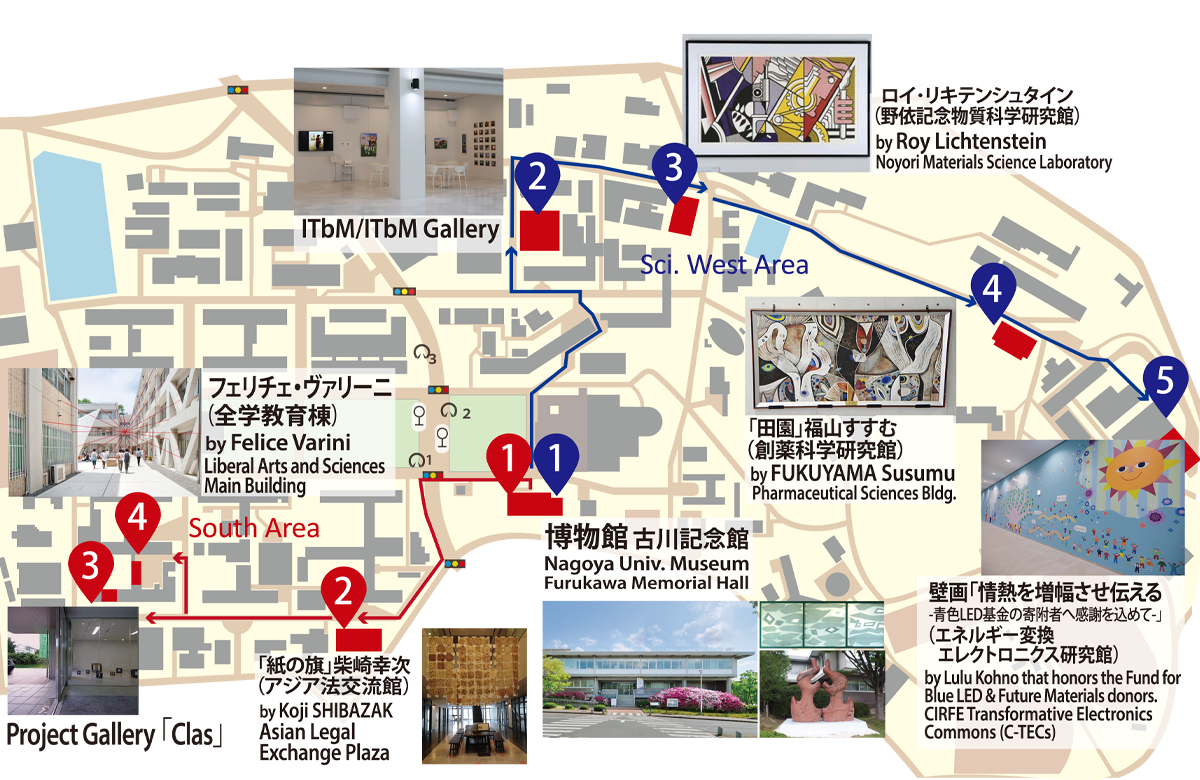E-2 アートコース
Arts
1 博物館 古川記念館 Nagoya University Museum (Furukawa Hall)
-
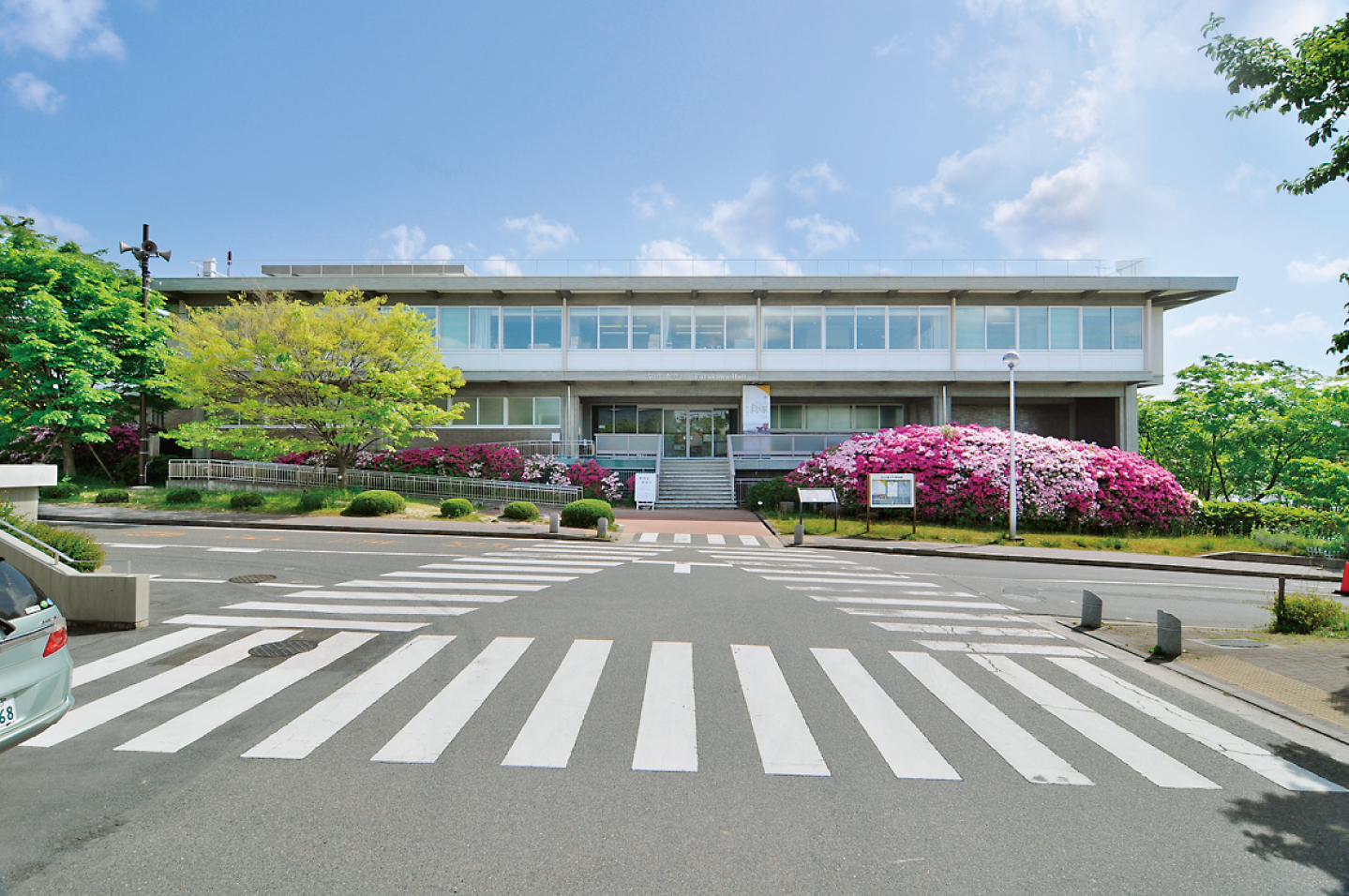
名大の歴史や研究はもちろん、地域の自然やアートの展示を無料開放
開館時間:10:00~16:00 休館日:日・月曜
お問い合わせ:052-789-5767Beyond NU’s history and research, museum exhibitions also draw attention to the natural environment and art of our region. Our outdoor exhibits include Kota KINUTANI’s stone sculptures, and we occasionally organize hands-on learning opportunities and other events. Admission is free.
Open 10:00-16:00, closed on Sundays, Mondaysまずはここから!
名古屋大学の歴史や研究はもちろん、地球の歴史や東海地方の自然について展示を無料開放しています。前庭には絹谷幸太氏の石彫も展示されています。ノーベル賞受賞研究が集う
ノーベル賞受賞にいたった名古屋大学の研究者とその研究内容について、総覧する展示があります。 -
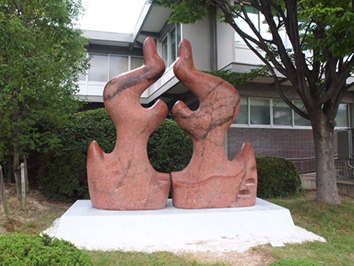 絹谷幸太 石彫群
絹谷幸太 石彫群
「絹谷幸太 創知彫刻」の展示を機に屋外に展示。見るだけでなく作品に触れ、素材である石を理解することができます。 -
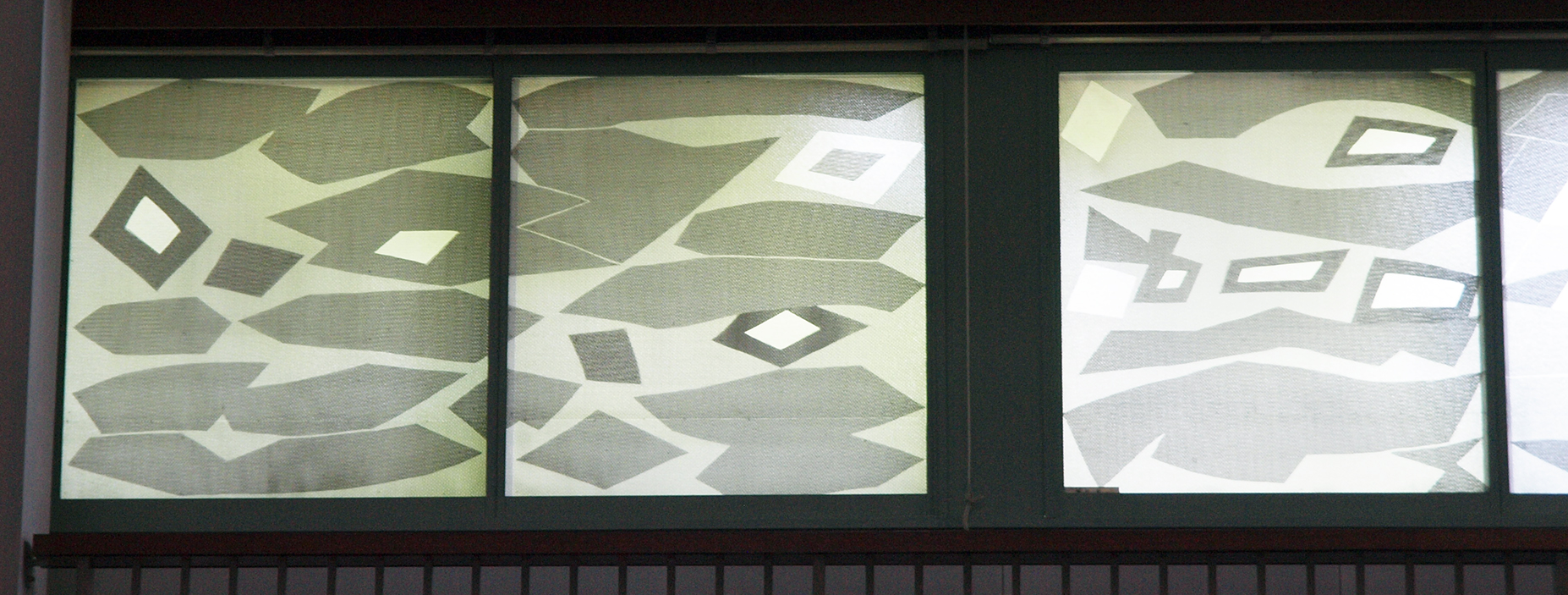 脇田和 建築装飾アート
脇田和 建築装飾アート
旧古川図書館の玄関ホールに飾られたアルミニウム金網-ガラスアート。 -
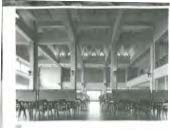 ユニークな建物
ユニークな建物
木目の入った、打ちっぱなしのコンクリート、上層階に行くほど広がるフォルム、折板天井の吹き抜け、断面十字型の柱など、近代建築の特徴がみどころです。建築家谷口吉郎による設計(1964年)。 - 図書館からの転身
1981年まで名大の附属図書館でした。その後資料館となり、2001年に博物館として一般公開されるようになりました。 - ヘラルド創業者による寄附
日本ヘラルド映画などのヘラルドグループを築いた古川為三郎氏と志ま夫妻の寄附により建設されました。 -
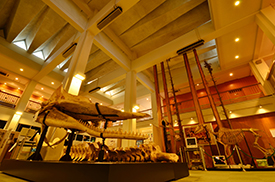 常設展示…マッコウクジラ骨格、巨大アンモナイト、ムラージュ、電子顕微鏡、日本最古の石、土器石器等、ノーベル賞展示等2000 年の開館以来、ホンモノにこだわりをもって展示を行っています。
常設展示…マッコウクジラ骨格、巨大アンモナイト、ムラージュ、電子顕微鏡、日本最古の石、土器石器等、ノーベル賞展示等2000 年の開館以来、ホンモノにこだわりをもって展示を行っています。
2 アジア法交流館
-
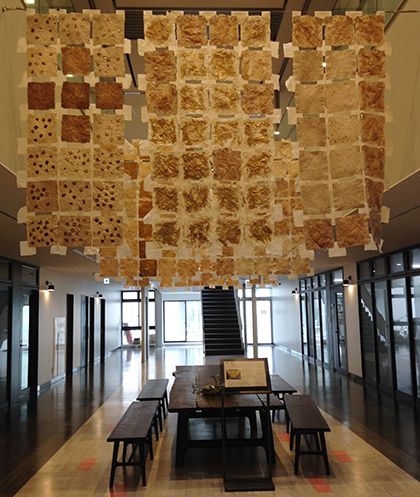
開館時間:10:00~19:00 休館日:日・土曜・祝
紙の旗 柴崎幸次
愛知県立芸術大学 柴崎幸次教授が制作。 楮、三椏、雁皮など、和紙の基本となる素材を使い、全て手漉きで漉いた四角いサイズ(200×200ミリ)を構成した和紙タペストリーです。休憩スポット
ジェンダーリサーチライブラリ カフェブラン(CAFÉ BLANC)―本格派の色々なパン
営業時間:8:00~19:00 休館日:日曜
お問い合わせ:052-364-9399
3 プロジェクトギャラリー Clas Project Gallery 「Clas」
-
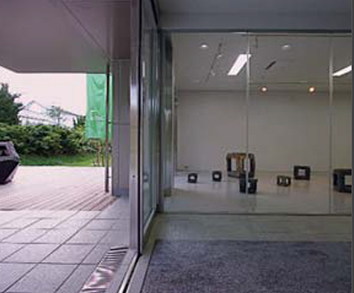
展示ギャラリー
教養教育と連携し、視覚を通した複眼的な思考と総合的な知識の育成を目的に、現代美術やデザインの展覧会などが行われます。展覧会などの開催時のみオープン。
開館時間:10:00~18:00 休館日:日・土曜・祝A gallery devoted to nurturing new generations with academic capabilities and rich, humanistic perspectives through liberal arts and sciences education. Exhibitions are held at Project Gallery 「Clas」, while Felice Valini’s “Venti Punti Dieci Rete” is seen outside the building.
4 全学教育棟 Liberal Arts and Sciences Main Building
-
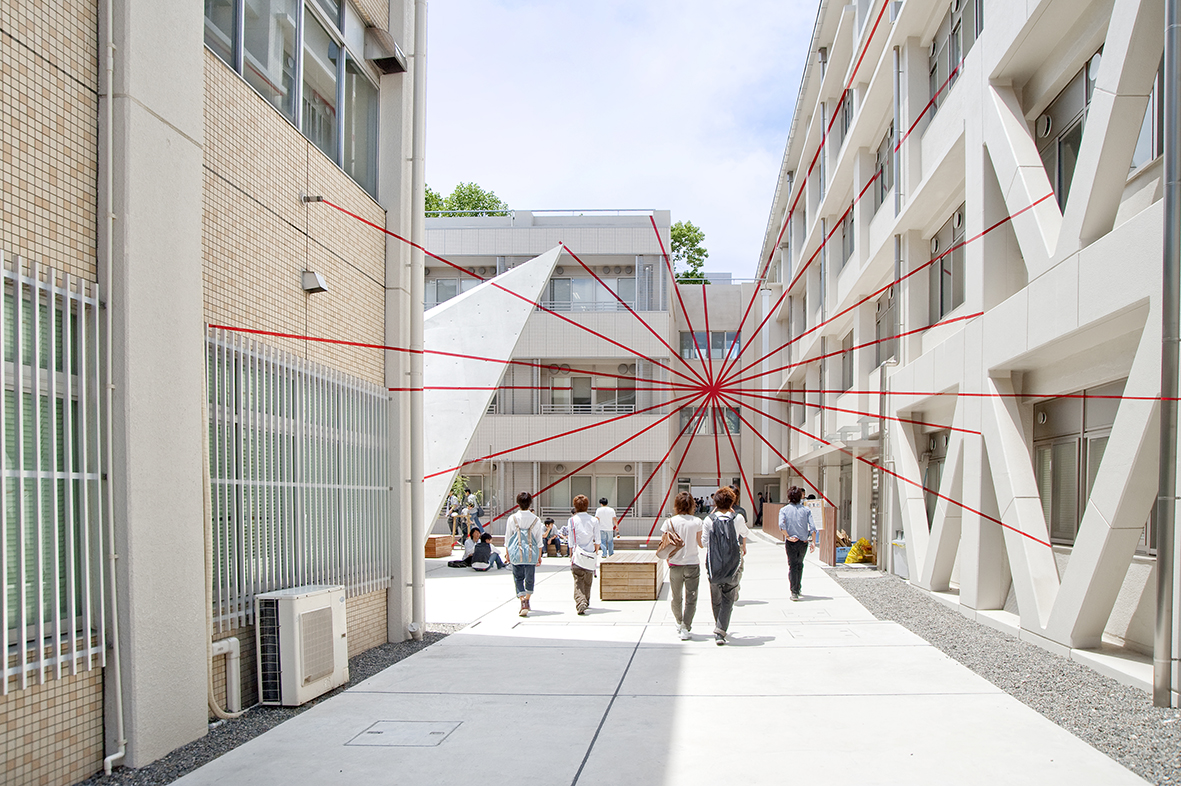
20の点と10の直線 “Venti Punti Dieci Rete” フェリチェ・ヴァリーニ
スイス生まれでフランス在住の現代美術アーティスト、フェリチェ・ヴァリーニによるパブリックアート。不思議な赤い線の空間を体感!中庭のある一点に立つと、見事な光景が浮かび上がります。A gallery devoted to nurturing new generations with academic capabilities and rich, humanistic perspectives through liberal arts and sciences education. Exhibitions are held at Project Gallery 「Clas」, while Felice Valini’s “Venti Punti Dieci Rete” is seen outside the building.
1 博物館 古川記念館 Nagoya University Museum (Furukawa Hall)
-

名大の歴史や研究はもちろん、地域の自然やアートの展示を無料開放
開館時間:10:00~16:00 休館日:日・月曜
お問い合わせ:052-789-5767Beyond NU’s history and research, museum exhibitions also draw attention to the natural environment and art of our region. Our outdoor exhibits include Kota KINUTANI’s stone sculptures, and we occasionally organize hands-on learning opportunities and other events. Admission is free.
Open 10:00-16:00, closed on Sundays, Mondaysまずはここから!
名古屋大学の歴史や研究はもちろん、地球の歴史や東海地方の自然について展示を無料開放しています。前庭には絹谷幸太氏の石彫も展示されています。ノーベル賞受賞研究が集う
ノーベル賞受賞にいたった名古屋大学の研究者とその研究内容について、総覧する展示があります。 -
 絹谷幸太 石彫群
絹谷幸太 石彫群
「絹谷幸太 創知彫刻」の展示を機に屋外に展示。見るだけでなく作品に触れ、素材である石を理解することができます。 -
 脇田和 建築装飾アート
脇田和 建築装飾アート
旧古川図書館の玄関ホールに飾られたアルミニウム金網-ガラスアート。 -
 ユニークな建物
ユニークな建物
木目の入った、打ちっぱなしのコンクリート、上層階に行くほど広がるフォルム、折板天井の吹き抜け、断面十字型の柱など、近代建築の特徴がみどころです。建築家谷口吉郎による設計(1964年)。 - 図書館からの転身
1981年まで名大の附属図書館でした。その後資料館となり、2001年に博物館として一般公開されるようになりました。 - ヘラルド創業者による寄附
日本ヘラルド映画などのヘラルドグループを築いた古川為三郎氏と志ま夫妻の寄附により建設されました。 -
 常設展示…マッコウクジラ骨格、巨大アンモナイト、ムラージュ、電子顕微鏡、日本最古の石、土器石器等、ノーベル賞展示等2000 年の開館以来、ホンモノにこだわりをもって展示を行っています。
常設展示…マッコウクジラ骨格、巨大アンモナイト、ムラージュ、電子顕微鏡、日本最古の石、土器石器等、ノーベル賞展示等2000 年の開館以来、ホンモノにこだわりをもって展示を行っています。
2 ITbM
-
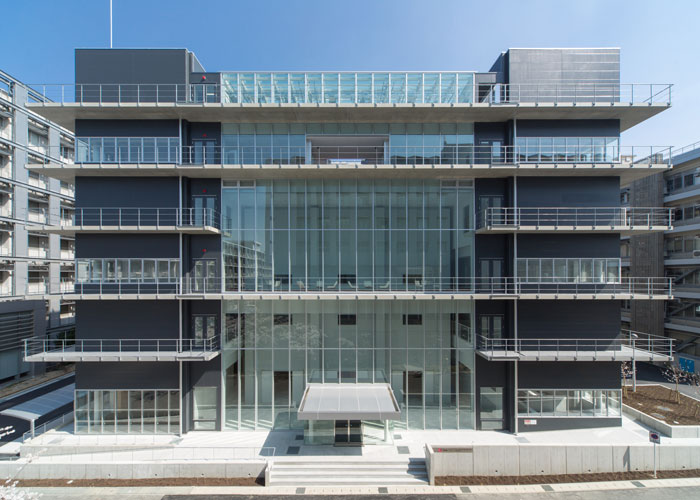
-
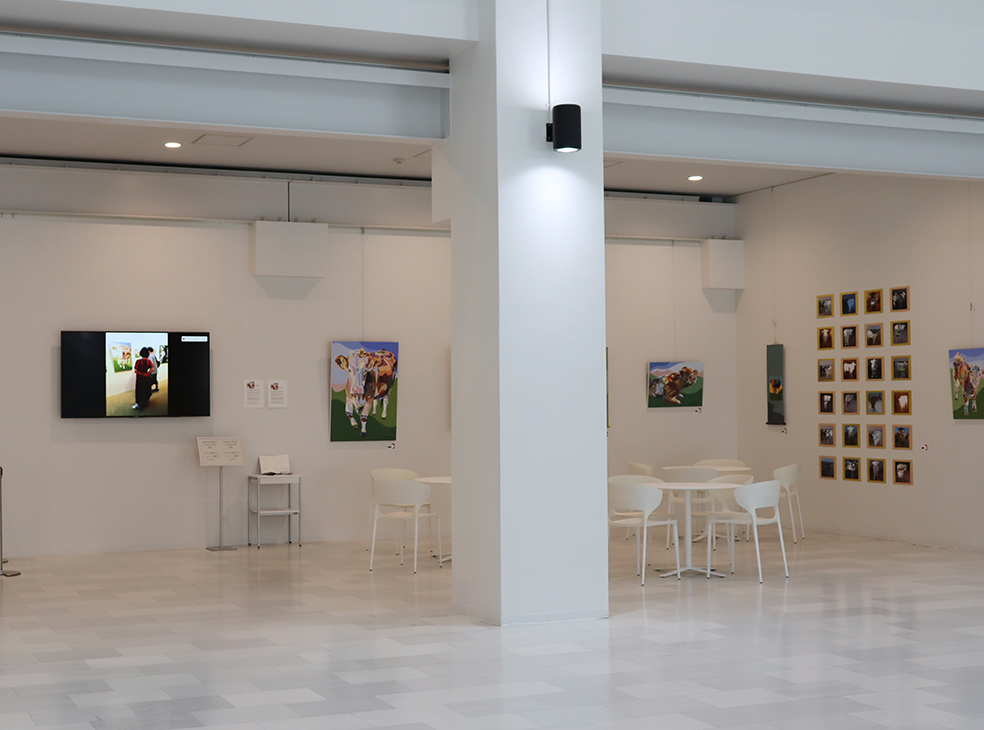 ITbMギャラリー
ITbMギャラリー
新しい学際的分子研究拠点「トランスフォーマティブ生命分子研究所 (ITbM)」。1階エントランスのギャラリー部分のみ公開。
※展示内容、展示時期はHP等で要確認開館時間:9:30~19:30 休館日:日・土曜・祝
The Institute of Transformative Bio-Molecules is a center for the latest interdisciplinary molecular research. The gallery section at the entrance is the only area open to the public. The institute adopted the concept of “integration” between art and science as its primary theme and was built with the intention of not just furthering the understanding of “integration” among a large number of people, but also to inspire scientists and create new and exciting ideas related to “integration.”
*See the ITbM Gallery website for more information on and a schedule of its exhibitions.
Open 9:30-19:30, closed on Sundays, Saturdays and Holidays
3 野依記念物質科学研究館 Noyori Materials Science Laboratory
-

開館時間:10:00~16:00 休館日:日・土曜・祝
The Chemistry Gallery includes an exhibit dedicated to Professor Ryoji NOYORI’s research, which won him the 2001 Nobel Prize in Chemistry. Roy Lichtenstein’s Peace through Chemistry is also on display.
Open 10:00-16:00, closed on Sundays, Saturdays and Holidays -
 Peace through Chemistry ロイ・リキテンシュタイン
Peace through Chemistry ロイ・リキテンシュタイン
リキテンシュタインは、アメリカを拠点に活躍したポップアートの作家です。このリトグラフ作品は、野依教授の受賞を記念して門下生らから贈られました。 -
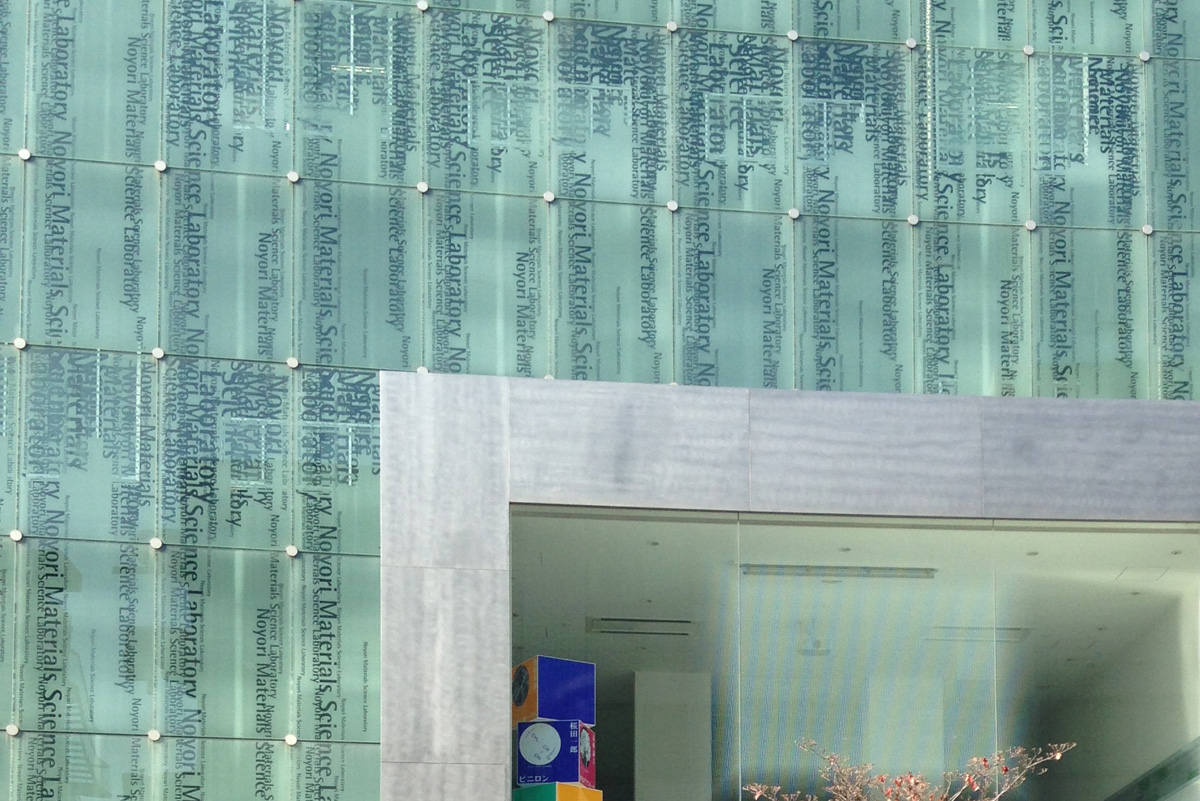 ガラス壁の建物もみどころ
ガラス壁の建物もみどころ
緩やかなカーブを描き連続する2棟の外壁とガラスの壁が特徴です。最先端の化学系研究実験棟のモデルとなっています。 -
休憩スポット
レストラン「花の木」―落ち着いた雰囲気で和食中心
営業時間:11:30~13:45 休業日:日・土曜・祝
お問い合わせ:052-783-8707ダイニングフォレスト―理系エリアの学食
営業時間:平日11:00~20:00/土曜11:30~13:30 休業日:日曜・祝
お問い合わせ:052-782-1832
4 創薬科学研究館 Pharmaceutical Sciences Building
-
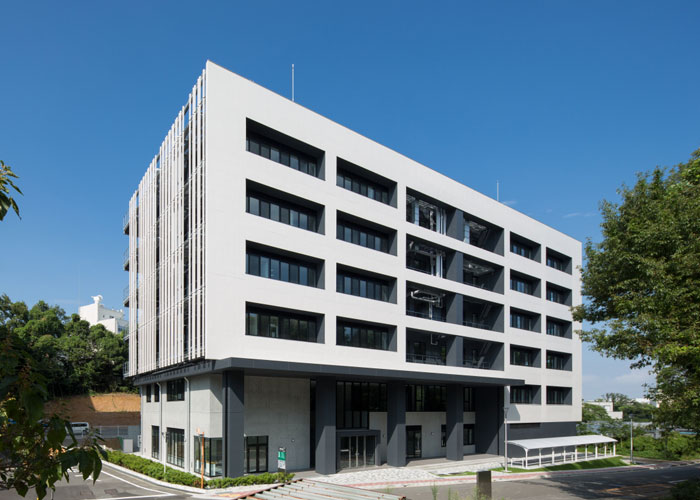
多分野融合による創薬科学教育・研究拠点。1階の「ラボショップ」とエントランス部分のみ公開。形象派の創立者、福山すすむ氏(創薬科学研究科 福山透特任教授のお父様)の絵画作品「田園」を展示。福山すすむ氏は、画家、教育者、音楽家、哲学者、発明家、演出家などの多面的な才能を発揮された芸術家。
開館時間:10:00~19:00 休館日:日・土曜・祝The building is a center for the intersecting and integrated fields of research and education in the Pharmaceutical Sciences. Only the “Lab Shop” on the first floor and the entrance are open to the public. “Fields,” a painting by Susumu FUKUYAMA (father of designated professor Tohru FUKUYAMA in the Graduate School of Pharmaceutical Sciences), is on display here. Mr. Fukuyama was a painter, educator, musician, philosopher, inventor, performer, and more; a talented artist who expressed his gifts through many creative outlets.
Open 10:00-19:00, closed on Sundays, Saturdays and Holidays -
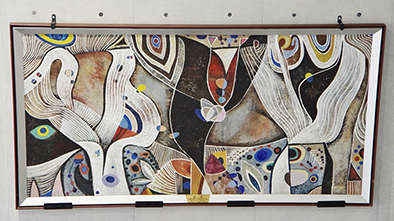 田園 福山すすむ
田園 福山すすむ
多分野融合による創薬科学教育・研究拠点。1階の「ラボショップ」とエントランス部分のみ公開。形象派の創設者、福山すすむ作の絵画「田園」を展示。
5 エネルギー変換エレクトロニクス研究館(C-TECs) CIRFE Transformative Electronics Facilities (C-TEFs) / CIRFE Transformative Electronics Commons (C-TECs)
-
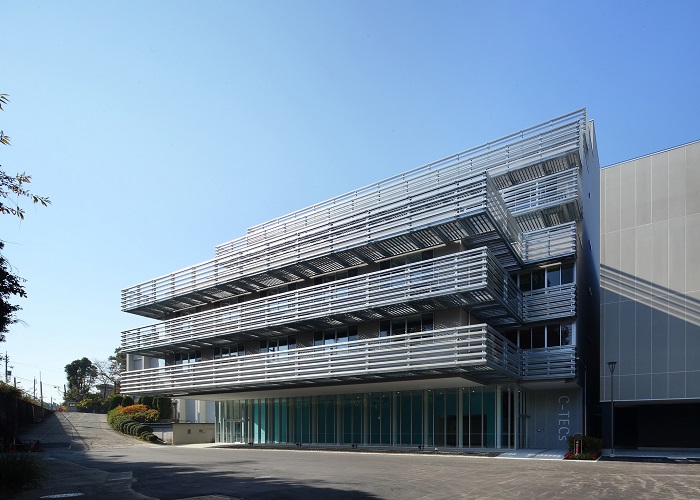
天野浩教授(2014年ノーベル物理学賞受賞)を中心に、窒化ガリウム研究開発の加速や産学連携の強化を目指している。C-TECs1階には、青色LED基金の寄附者を顕彰する壁画(河野ルル作)がある。
The two facilities aim to accelerate the research development of GaN (Gallium Nitride), led by Professor Hiroshi AMANO (2014 Nobel Prize in Physics), and strengthen industry-academia collaboration. On the 1st floor of C-TECs, there is a mural, painted by Lulu KOHNO, that honors the Fund for Blue LED & Future Materials donors.
-
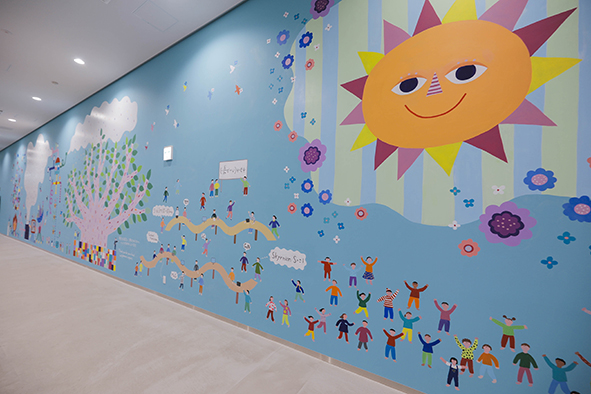 情熱を増幅させ伝える-青色LED基金の寄附者へ感謝を込めて- 河野ルル
情熱を増幅させ伝える-青色LED基金の寄附者へ感謝を込めて- 河野ルル - 休憩スポット
CAFE・de・Mon・CIRFE
C-TECs1階にある2019年4月初旬オープンのカフェ
